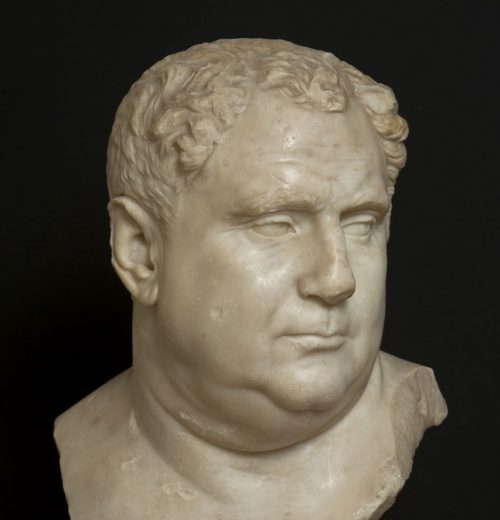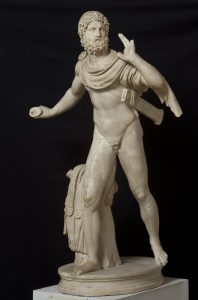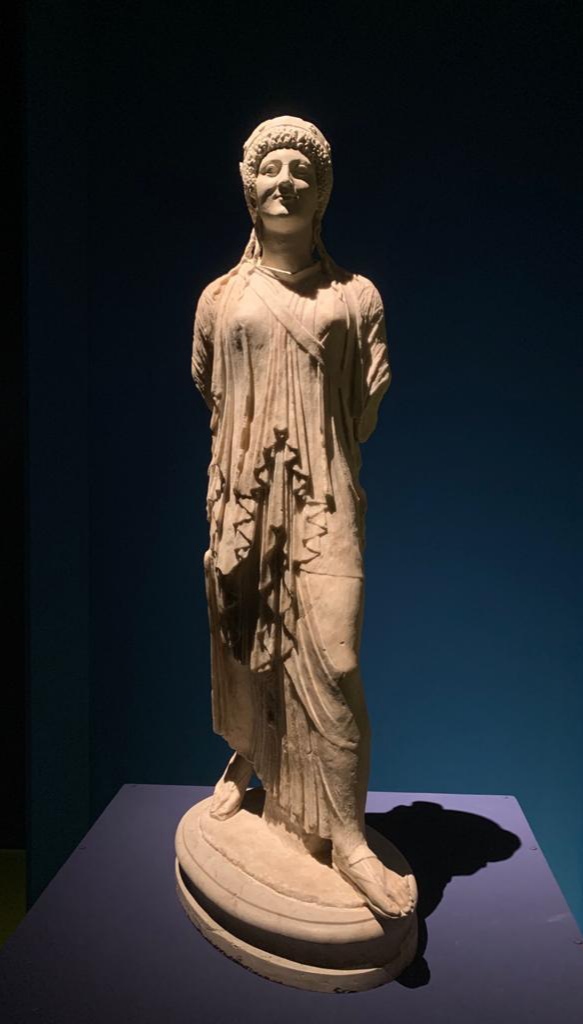
1523-2023: a precious legacy for Venice
Felix vibas, an incitement to happiness, is the spurious inscription found on the back of the bust of the so-called Vitellio, a Roman portrait from the age of Hadrian, which belonged to the collection of Cardinal Domenico Grimani. This motto, by extension, could represent an illuminating sub-text to define the fertile cultural environment of the 16th century which surrounded the Venetian prelate.
Domenico Grimani was a friend and protector of artists and literati, a collector of books, paintings, and antiquities with an eclectic taste. Vasari recalls that following the discovery of the Laocoon group in 1506, Domenico won the bronze model made by Sansovino, who excelled in a challenge promoted by Bramante and judged by Raphael. He was a refined collector but also an intellectual in close contact with the greatest artists of his time, who contributed significantly to the history of the Archaeological Museum of Venice.
In fact, his archaeological collection formed in Rome, presumably also thanks to discoveries in his properties (the Grimani vineyard on the slopes of the Quirinal Hill), was the first to become the property of the State, therefore public, thanks to a legacy. In 1586 his nephew Giovanni Grimani followed his example and originated the Public Statuary, the original nucleus of the future Archaeological Museum, in 1596.
In the summer of 1523, Domenico faced a difficult time. At the age of 62, the cardinal was seriously ill and his condition was made known to Venice on August 14th. His nephews Marco and Vettor hurried to Rome to be with him. Although there seemed to be some improvement, on August 25th, Domenico still had a fever and the doctors had to remove a terrible abscess behind his ear. Sadly, after two days, the doctors confirmed his passing.
Before he died, on August 16th, a will was created. It established that the properties in the Veneto region would go to his brother, Vincenzo, the glyptic and numismatic collection to his favorite nephew, Marino, while the paintings and, above all, the ancient marbles and bronzes go to the Serenissima Republic. Furthermore, the famous Breviary, a masterpiece of Flemish miniaturistic art from the early 16th century, would go to the Venetian State, but only on the death of Marino who had the usufruct of it.

Portrait of Domenico (left) and Marino Grimani (right), painter from the Veneto, copy after Palma il Giovane, 17th century, oil on canvas; ø 127 cm, Museo di Palazzo Grimani, Venice (deposit Gallerie dell’Accademia, Venice)
Respecting the last will of someone is not always easy because of possible legal obstacles that impede its execution. A disagreement emerged among the Grimani family over the existence of another testament created by Domenico on 9 October 1520 at his villa in Noventa Padovana. This former will name Vincenzo as the primary beneficiary and did not appear to include the donation of antiquities to the Venetian state.
On September 10th, Marino and Vincenzo went to the Collegio dei Savi to decide which testament was to be considered valid: the one written according to Venetian law or the more recent one.
On September 15th, the Signoria forfeited the goods destined for it, and Marino delivered 28 crates. Since then, work began to prepare a room to exhibit the ancient sculptures (they selected 16, especially Roman portraits) in memory and honor of the cardinal. Pietro Bembo was also tasked with composing a commemorative inscription.
In 1525 the works were completed. Hence Venice can boast its heritage of classical antiquities, located in what will be called the Sala delle Teste, a room behind the Sala dei Pregadi or Sala d’Oro on the second noble floor.
Among the exhibited works that consisted of 11 portraits and 5 statues, the portraits of the so-called Vitellius, Trajan, and Lucius Verus, the statue of Ulysses, of the two Gauls, of Apollo Citharist, and the headless statuette depicting Venus Anadyomene stand out.

Ulysses, Roman copy of a Pergamene school original, first half of the 3rd century BC; Domenico Grimani collection
They will remain in the Doge’s Palace until, with the setting up of the Public Statuary in the anteroom of the Marciana Library, Domenico’s sculptures will move there together with the ancient marbles donated by his nephew Giovanni and by the procurator of Saint Mark, Federico Contarini.
LT
Reading suggestions:
Pio Paschini, Le collezioni archeologiche dei prelati Grimani del Cinquecento, in Rendiconti Pontificia Accademia Romana di archeologia, V, 1927, pp.149-190
Marilyn Perry, Cardinal Domenico Grimani’s legacy of ancient art to Venice, in Journal of the Warburg and Courtauld Institutes, XLI, 1978, pp.215-244.




